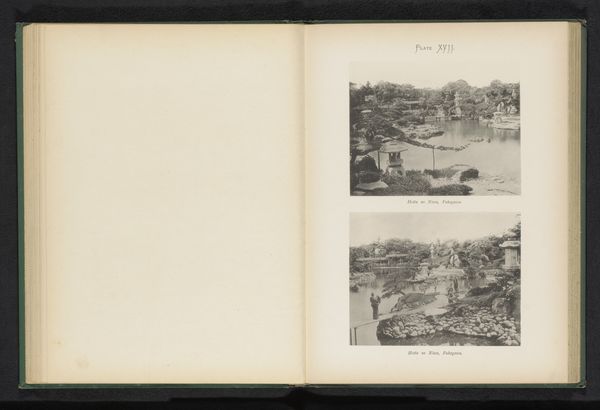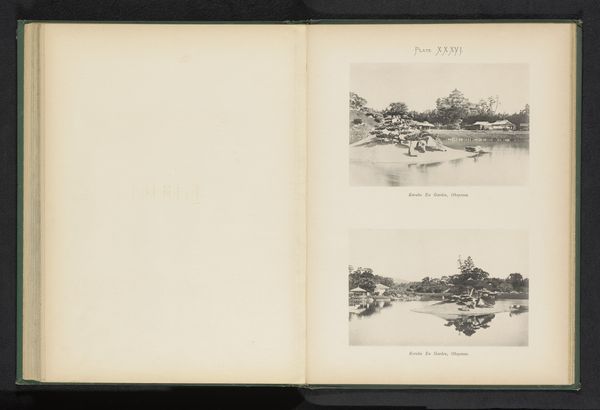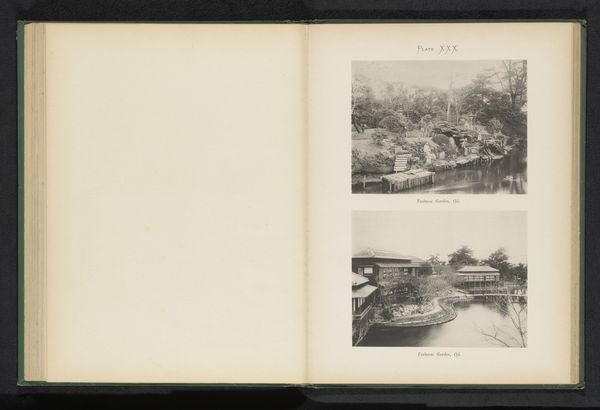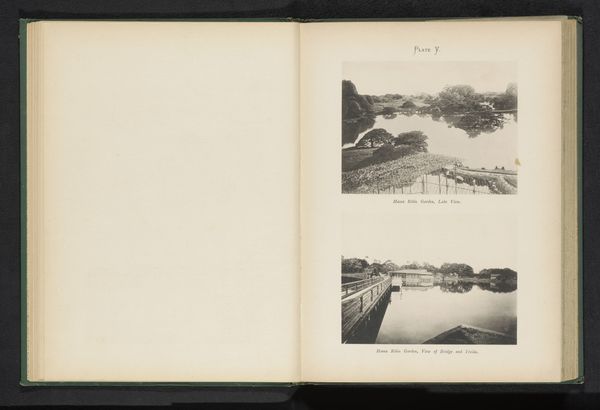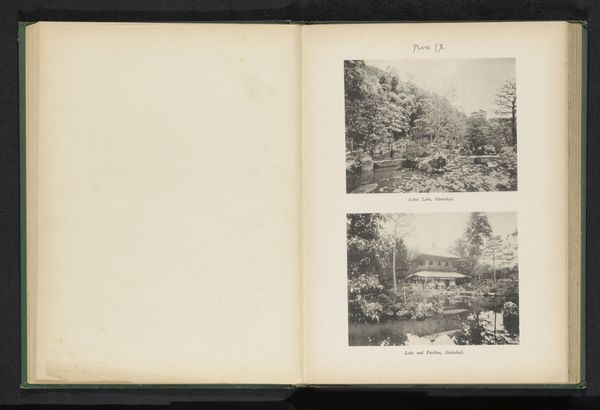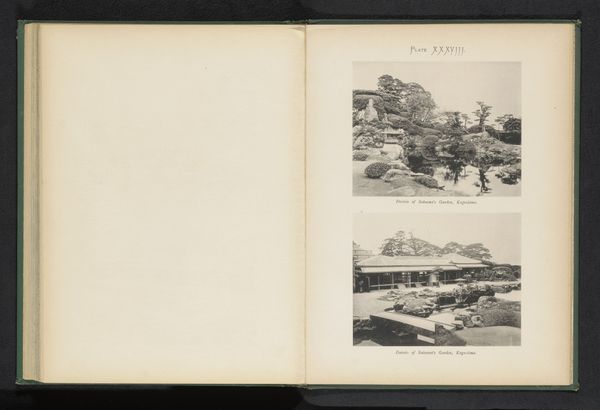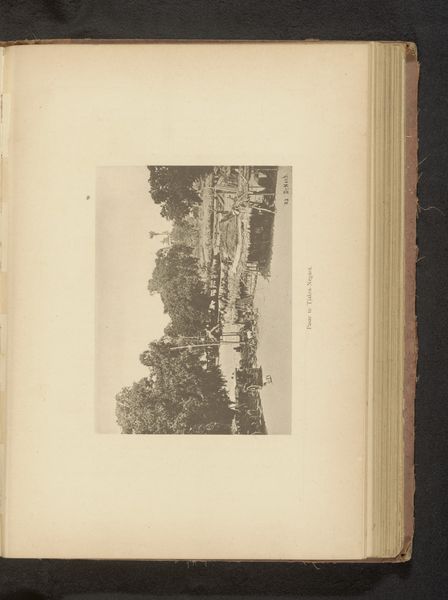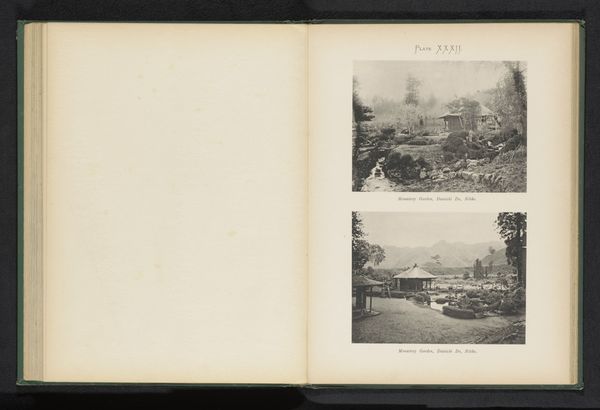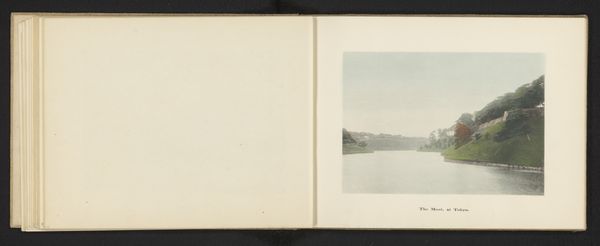
Gezicht op de tuinen van Daimio Tsuyama en een gezicht op een openbare tuin in Tokyo, Japan before 1893
0:00
0:00
print, photography, gelatin-silver-print
#
garden
#
ink paper printed
# print
#
landscape
#
photography
#
gelatin-silver-print
Dimensions: height 356 mm, width 258 mm
Copyright: Rijks Museum: Open Domain
Editor: We’re looking at "Gezicht op de tuinen van Daimio Tsuyama en een gezicht op een openbare tuin in Tokyo, Japan," a photograph, or rather a print, by Kazumasa Ogawa, predating 1893. It feels like a serene study of designed landscapes, each with a different spatial organization. How do you interpret this work through its visual elements? Curator: The photograph is particularly intriguing due to its presentation of two distinct gardens within a single frame. Consider the upper garden: the composition emphasizes the organic lines of the lake and the asymmetry of the landscaping, guiding the eye naturally across the scene. The darker tones along the embankment contrast with the light reflecting off the water, creating depth. Now, observe the lower garden. It contrasts markedly, doesn’t it? Editor: It really does! The lower image shows more artificial constructs like what appears to be lawn areas, in addition to smaller trees. The lighting seems flat; everything's evenly exposed, so it lacks dimension. Curator: Precisely. The interplay of light and shadow—or the lack thereof—constructs completely different visual languages. One leverages tonal contrast and intricate lines to create visual interest, while the other relies on a uniform distribution of light that, perhaps, highlights form over texture. Also note that the vantage point changes significantly and impacts our interpretation. Do you agree? Editor: I agree completely. One thing I hadn’t thought about initially was how Ogawa used visual organization to define the qualities of each landscape. I learned so much about how these two photographs are different, and how that tells its own story. Curator: Indeed! The photograph makes evident the differences in compositional strategy. The tension between these gardens, seen together, offers insights into formal landscape traditions.
Comments
No comments
Be the first to comment and join the conversation on the ultimate creative platform.

